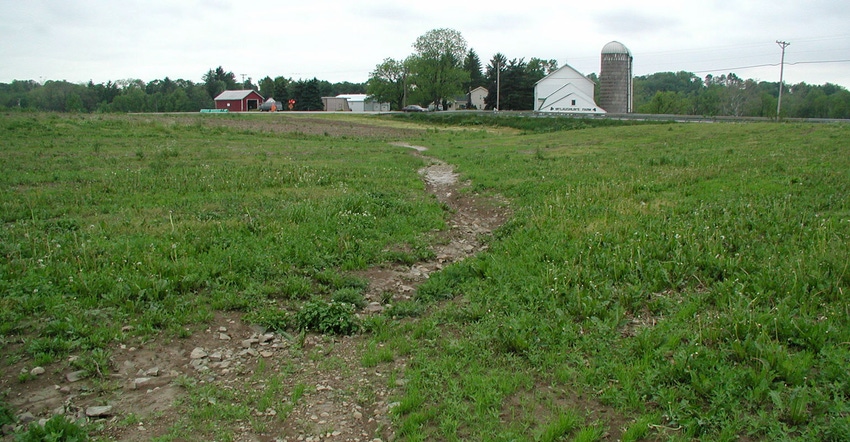April 29, 2019

After last year’s gully washers, some farmers are digging up soil from bottomlands to fill in the washed-out soil.
But is care being taken to prevent these gullies from forming again?
It is important to address gullies to keep them from growing bigger and bigger. The 1985 Food Security Act, as amended, requires all gullies on highly erodible land to be repaired or farmers risk losing government farm payments.
After record precipitation in 2018, so-called “ephemeral gullies” — shallow gullies that can easily be filled in by tillage — have appeared in many fields, and reports are coming in that farmers are now working on repairing gullies by filling them in with soil from the bottomlands.
While this may look good for a while, this soil could easily be washed out again when we get another big storm. These storms are expected to become more frequent as our climate is changing, so it is important to fix gullies and make sure they don’t form again.
Here are four things to help prevent gullies from forming:
1. Improve soil infiltration. The key here is to improve soil health. The more the water infiltrates, the less runoff and the less likely gullies will re-form.
Farmers can increase infiltration by planting high-residue crops, sod crops, and tall, vigorous cover crops; leaving residue in the field; spreading packed manure, compost or liquid manure with a lot of coarse material; and using no-till.
2. Practice no-till. No-till is also important because it leaves surface residue that protects the soil from the effects of raindrops.
The residue slows runoff, giving water more chance to infiltrate. The organic matter left on top of the soil also stimulates biological activity, and this is important to maintain soil structure and macroporosity.
Another important step is to avoid soil compaction that would again reduce infiltration. Cover the repaired gully with straw or sawdust to protect it from the elements and to feed soil organisms.
3. Plant close and plant cover crops. Plant closely spaced crops this summer (for example, drill soybeans instead of planting them) and plant all crops on the contour (across the gully).
Also, plant cover crops after summer crop harvest and plan to use high cover crop seeding rates in the repaired gully area.
4. Plant a grassed waterway. If a farmer expects concentrated flow to happen frequently in the repaired gully area, it may be best to plant a grassed waterway there. In extreme cases, farmers could also install permanent structures in the previous channel.
If the soil has a seasonal high water table, artificial drainage may help to remove excess water.
Source: Penn State University, which is solely responsible for the information provided and is wholly owned by the source. Informa Business Media and all its subsidiaries are not responsible for any of the content contained in this information asset.
You May Also Like




